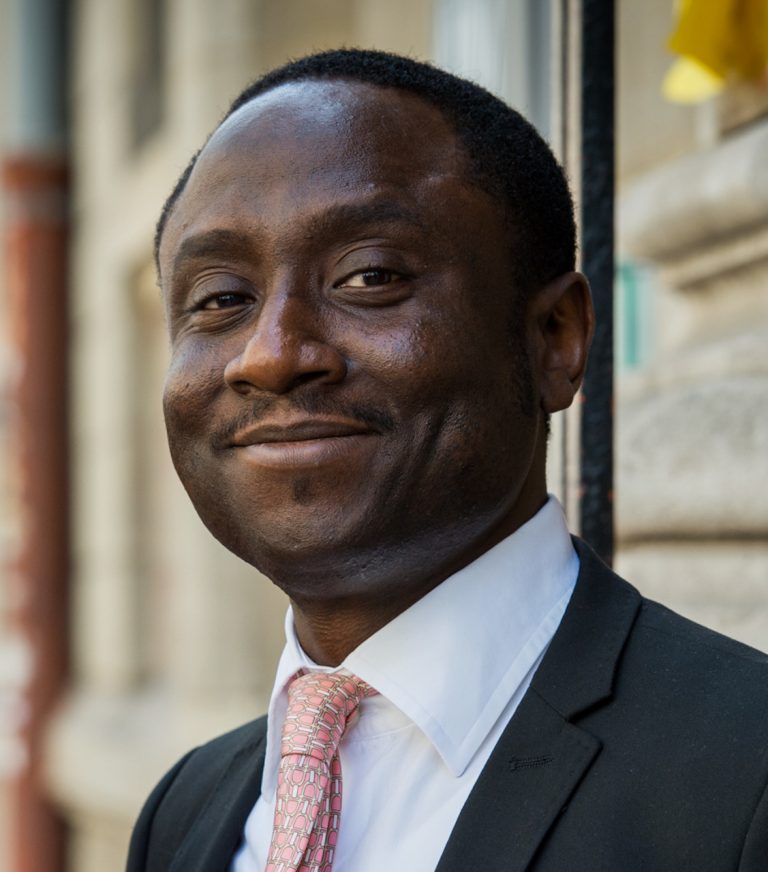Recognition
‘Native Tales’ is a birthday gift to my daughter, says Adams

By Godwin Okondo
OLAMIDE Adams wrote the stories many years ago, as a secondary school student, after being inspired largely by the NTA’s Moonlight Tales series of yore. But he kept them aside as adolescent fantasy and kept on with the business of living his life. But then in faraway France, where he lives with his wife and daughter, he suddenly remembered. His daughter’s fifth birthday was coming and he needed a unique present for her. His daughter not having visited Nigeria before, and with a French wife, he felt presenting her daughter with uniquely Nigerian folk tales would be a nice way to introduce her to her father’s country.
Thus was borne ‘Natives Tales: A Collection of Short Stories’ published by Prima, an imprint of Narrative Landscape Press. But beyond acquainting her daughter with her Nigerian background through stories, Adams also wants to improve reading culture in the country, especially among children through the arts of storytelling.
Although a professional marketer, Adams has a strong artistic background. He worked at the French’s Alliance Francaise in the early 2000. He’s also a musician, who continues to ply that artistic talent on the side. His recent work is a collaborative album that celebrates late Fela Anikulapo’s musical ally and superb drummer, Mr. Tony Allen, who died in Paris last year. Adams was at the funeral; they were that close.
‘Native Tales’ is a collection of folktales involving the major Nigerian ethnic nationalities. The book contains five stories, with valuable lessons that teach children how to develop good morals and trust in others.
According to Adams; “My book was written as a gift for my daughter’s fifth birthday. I thought, ‘what would I give to this girl that would be memorable?’ So I picked up one of these stories.
“My wife lost her grandmother who she was so close to. The family was gathered when I received a message from Amazon saying, ‘Delivered.’ In the evening, I said to my daughter, ‘there’s something in the mailbox, let’s go get it.’ We took a photo that shows how happy she was, despite not knowing the contents of the book. My book made it for Christmas and that made me extremely happy.”
He spoke about the development of the stories; “I tried to make it a mixture of Nigerian cultures. There is a story about the Shehu in the North, Anayo from the East, Ayangoke the talking drummer from the West, the three principal ethnic groups and, of course, the main story that everybody likes, ‘The Journey to Oke-Oro’. So when I changed the character to a girl, I used my daughter’s Yoruba name; so, the name in that story, Oladunni, is my daughter’s Yoruba name. The last story is about how it pays to do good. It’s about two friends, rich and poor and the rich friend didn’t care about his other friend.
“I wrote the stories when I was in secondary school, perfected it when I was at Yabatech and finalized it two years ago. So it took me 30 years to publish the stories. I still have lots of stories. I have a pile and I kept travelling with them. I hope I can get myself to bringing out another book. I wrote these collections of stories and I kept them since JSS1; that was in 1986. I think I finished this particular collection in 1989.”
Adams also spoke about the publishing process, especially the editing process he was subjected to as a pointer to young writers as to how a good book should incubate before it is finally exposed to the public, so it becomes better.
“The editor of the story, I must not forget, Ayodele Olofintuade, pushed me hard. I was angry when I was introduced to her because she was so direct. She said something about the book when she read the third story. She said, ‘all your main characters in the book are guys. Why?’ She wasn’t mincing words. When she edited the story, she sent some heavy critique and I would never forget I said to my wife: ‘Who is this woman? What does she mean? That I can’t write or what?’ So I sat down and I actually thought about everything she said. She had a point. That’s why you never react in anger.
“Everybody that reads that story tells me it’s the best for them. But Olofintuade said to me: ‘You said you are writing for your daughter, all your characters are masculine. Why don’t you change your character to a girl?’ And I said to her, ‘if I change the character, this would change the dynamics of the whole story,’ which it did, but she said, ‘do it’, and I did it.”
Adams confessed that he didn’t want to obey his editor. But he did eventually and the best is the better for the result of that character change.
“This was a job that I didn’t want to do because the book was already written and I just wanted to publish. So I had to go back, follow what she told me, redid the book, sent it back to her and she said, ‘Perfect.’”
Having got the book, Adams just wanted to publish and get it done. He wasn’t bothered about selling the book so long he has copies for Oladunni, his daughter. But his editor would have none of it. She wanted him to market the book, seeing that it has prospects fo youngsters beyond the author’s daughter, who lives in faraway France.
“I remember I said one thing, which was true at that time, and this was what I said to her, “I don’t care about marketing; it’s just a gift for my daughter.” Then she said, ‘why are you saying that? Try and sell it. It’s good. You never can tell tomorrow.’ So I decided to sell it and Narrative Landscape is selling. It’s still on sale on Amazon.
“I’ve also been doing the social media promotion. There were tons of likes and I can tell you it really made me happy even if people just liked it. But to be quite frank, I haven’t done any marketing. I think if I put my mind to it, I can do it.”
Adams also spoke about the lessons the book has for its targeted young and even adult readers: “Putting others first is the basic moral of the story. All these stories resonate with the value that hallmarks heroes, selflessness and service to others. That’s the key aspect of it.”
He said the book is targeted at the age grade of 8-12 year olds, biting; “One of the stories talks about nudity. We are not going to talk about that to 6-7 year olds. The second story talks about fights, wrestling, and I think people in the age group of 8-12 watch wrestling matches and they would appreciate something like that more.”
